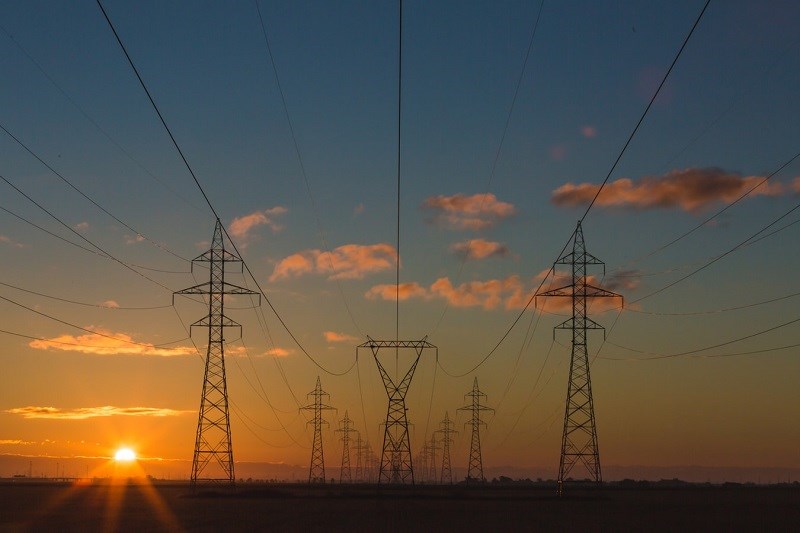
It’s getting harder and harder for anyone to ignore the impacts of climate change. In August this year, the latest Intergovernmental Panel on Climate Change report, titled Climate Change 2021: The Physical Science Basis, was called a “code red for humanity” by UN Secretary-General António Guterres.
The report was seen as damning and alarming, and even more so for Canada, where energy and materials account for about 25% of both the Morningstar Canada Index and the S&P/TSX Composite Index. Canada is the world’s fourth-largest oil producer and 10th-largest oil consumer. As it stands today, Canada’s economy is heavily dependent on oil and gas--a clear vulnerability from a climate and financial stability standpoint.
Eyes on Key Influencers
The big question, though, is what Canada’s giant pension plans are going to do about it. Canada has a very large pension fund sector, totalling around US$2.8 trillion, or 5.7% of collective OECD-area pension assets, which is greater than 100% of annual GDP. By their very nature, pension funds are long-term investors, which means they have an important role to play in shaping the long-term prospects for the Canadian economy. “Globally, large asset owners are at the forefront of the investor net zero movement. However, Canadian pension funds lag their international peers when it comes to making UN ‘Race to Zero’ endorsed net zero commitments,” says Morningstar’s Director of Investment Stewardship Research, Jackie Cook.
In promising news for the space, on September 28th, Canada's No. 2 pension fund, Caisse de depot et placement du Quebec (CDPQ), said it will shed all of its oil production assets, valued at $3.9 billion, by the end of 2022 and reduce carbon intensity by 60% by 2030. As part of a plan to reach net-zero emissions by 2050, Montreal-based CDPQ plans to hold green assets worth $54 billion by 2025 and dedicate $10 billion to decarbonize carbon-emitting sectors.
Apart from retaining large fossil fuel holdings, Canadian pension funds have not used their ownership to aggressively challenge home-grown emitters to decarbonize their business models, believes Cook. “Not only does this expose Canadian workers and retirees to undue financial risk, it delays climate action across the economy. Pension funds’ reticence to lead with escalated investor actions, like filings shareholder resolutions and holding directors accountable with their proxy votes, effectively shields Canadian emitters from the growing investor backlash against heavy emitters in other markets. Canadian investors have a critical role to play in the achievement of economy-wide decarbonization targets under the new Canadian Net-Zero Emissions Accountability Act,” she said.
Don't Forget Your Fiduciary Duty
In order to spearhead action and accountability among pension plan stewards, Shift: Action for Pension Wealth and Planet Health has sent detailed letters to the boards and executives of each of Canada's ten largest pension funds, that lay out the clear legal fiduciary duty that funds have to manage growing climate-related financial risks. They also request transparency from the funds on how they are meeting this duty. The funds have been given until the end of 2021 to respond to the questions.
Shift is a charitable initiative that monitors the investments of Canadian pension funds and works to protect pensions and the climate by bringing together beneficiaries and their pension funds to engage on the climate crisis.
“We believe that many of Canada’s largest pension funds inadequately disclose their investments and climate risks, and continue to offer only weak or incomplete strategies to address those risks. To date, only two major Canadian funds (CDPQ and OTPP) have committed to net-zero emissions by 2050 and have published interim targets,” said Shift director Adam Scott in an email.
After the initial announcement, Scott answered Morningstar’s questions around the initiative and explained why he thinks it is important to hold pensions funds to account. Here are edited excerpts:
The point of these letters is that Canadian pension plan providers at present do not adequately address climate change. Why do you believe this is the case?
Scott: Yes, Shift's current opinion is that what Canadian pensions have disclosed thus far, does not adequately address climate change. It is possible they have more detailed internal investment strategies, but what has been disclosed to beneficiaries and the public is clearly inadequate.
I want to clarify that when we say 'adequately address climate change' we mean that entirely within the bounds of their legal fiduciary duty to invest in the best financial interest of their beneficiaries. These letters are not concerned with broader 'public policy issues'. Rather, they are focused entirely on the fact that a pension's response to the climate crisis is directly linked to the long-term financial health of the fund and the ability of retirement savings. In our view, fiduciary duty requires a comprehensive climate strategy.
From what is currently disclosed (specific ESG integration criteria are rarely published), we think the funds' exposure to climate-related financial risk is unacceptably high (i.e. physical, transition, legal, regulatory risks). Canadian pension funds do not appear to have adequate controls in place to minimize these near-term risks.
Beyond specific investments, the long-term ability of the funds to meet their pension obligations is also directly linked to whether or not our society can stabilize temperatures at levels the global scientific community has warned would have the best probability of limiting climate risk - i.e. aiming to stabilize temperatures at or below 1.5˚C as is also specified in the Paris Agreement. The investment decisions of Canada's largest pension funds, which have nearly $2 trillion AUM, have a huge influence on our society's overall ability to achieve climate safety.
Which of the plans’ portfolios, according to Shift, is best prepared to deal with the impacts of climate change? Which is the worst?
Scott: Only two Canadian pension plans have announced net-zero emissions by 2050 goals, roughly in line with the Paris Agreement goals: CDPQ and the Ontario Teachers’ Pension Plan (OTPP). Both have also published essential interim 2025 targets, which will influence existing investment decisions, not just those way down the road. OTPP's new interim targets still lack detail, but they appear to be more ambitious than those from CDPQ. Both funds are looking at other important measures, like a climate-related engagement strategy. In spite of these plans, CDPQ and OTPP continue to hold financially risky and globally harmful fossil fuels and other high-carbon assets without a clear strategy.
On the other end of the spectrum, Shift has very little transparency or meaningful action from Ontario pensions IMCO, or HOOPP to date in managing climate risk. Neither fund has provided meaningful answers to inquiries from beneficiaries in the past. AIMCo in Alberta has also been linked to risky entanglement with fossil fuel interests in recent years, facing financial issues in part due to its exposure to struggling oil & gas investments. CPP has also resisted calls to align its investment strategy with a safe climate trajectory, and inaccurately claims that "all the companies in which it invests have viable transition strategies". In our view, none of CPPs fossil fuel holdings (that have been disclosed) have published credible or profitable transition strategies aligned with climate safety.
How would Shift measure action on this issue?
Scott: In 2021, we see fiduciary duty requiring that pension funds have a comprehensive strategy that aligns their investments with a credible path to climate safety. This requires several key elements:
- A long-term Paris-alignment goal (i.e. zero emissions by 2050)
- Ambitious and transparent interim targets (i.e. 50% reduction in total portfolio emissions by 2025)
- A screen on new fossil fuel investments (likely defined as companies with a % revenue from industries linked to coal, gas, or oil extraction, transportation, and processing.) and a phase-out timeline for removing these high-risk assets from the portfolio (i.e. by 2025 at the latest).
- Transparent interim goals for increasing the amount of capital allocated to profitable climate solutions
- A clear set of expectations for owned companies which requires credible and profitable zero-emissions pathways and financial risk disclosure, as well as a total ban on lobbying against ambitious climate policies. (i.e. companies could not be members of CAPP)
- A robust engagement strategy to ensure all stated expectations are met (with divestment as a potential consequence for failing to meet expectations)
- Linking executive bonuses to achieving the fund's climate goals (to ensure the interests of staff and the beneficiaries they work for are aligned)
What will the next steps be if pensions plans either a. ignore the letters or b. inadequately address the issue?
Scott: Ignoring these letters, or providing inadequate responses would be a strong signal that pension funds are not adequately considering the overwhelming financial risks of the climate crisis for their portfolios, and could potentially signal that funds are inadequately discharging their fiduciary duty to beneficiaries. This could potentially expose them to legal challenges. Shift intends to continue working with beneficiaries to educate and engage constructively with the funds to help them to create credible climate strategies and join the ranks of leading funds. Time is of the essence; we need to see far faster progress.




















